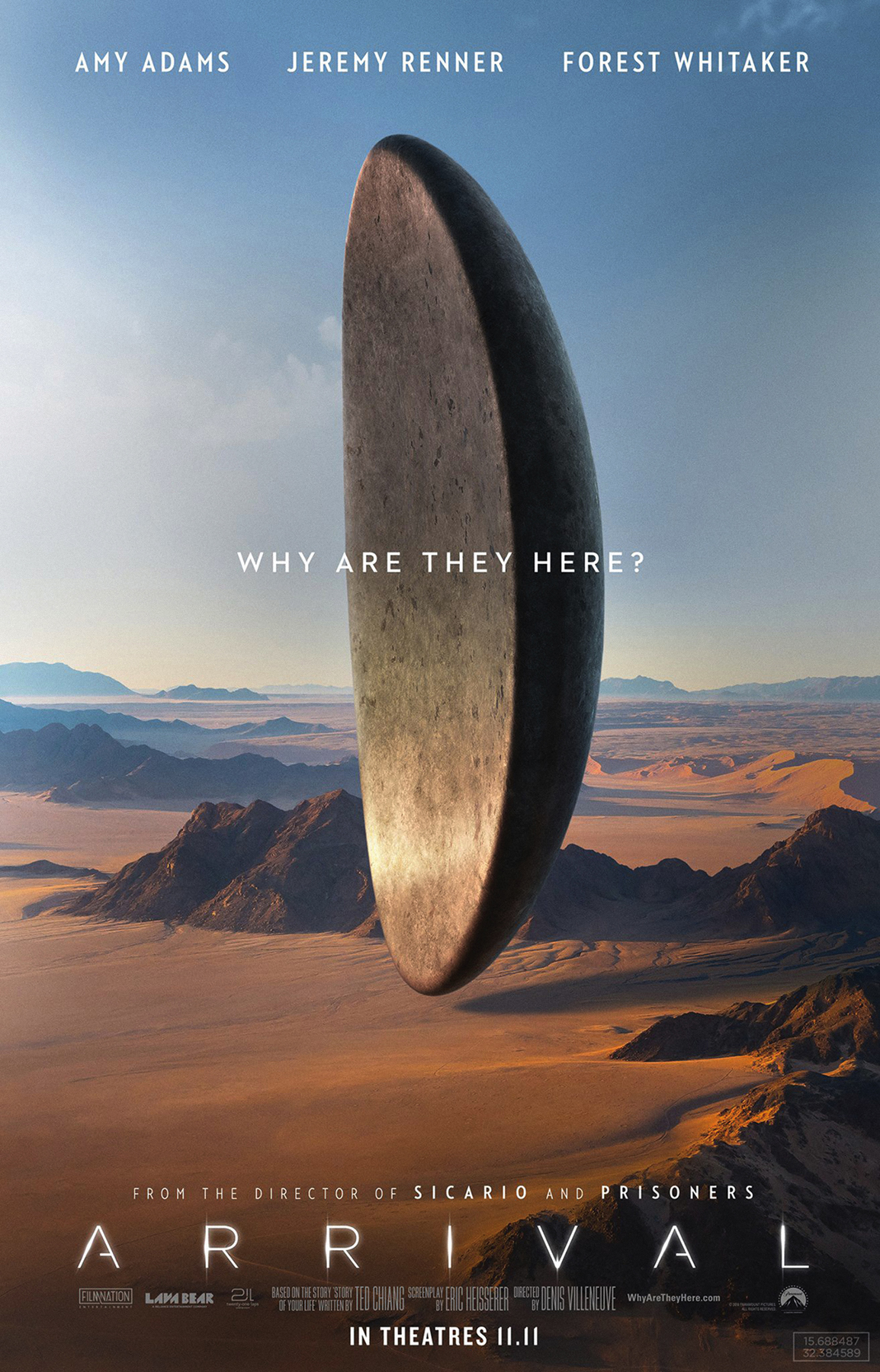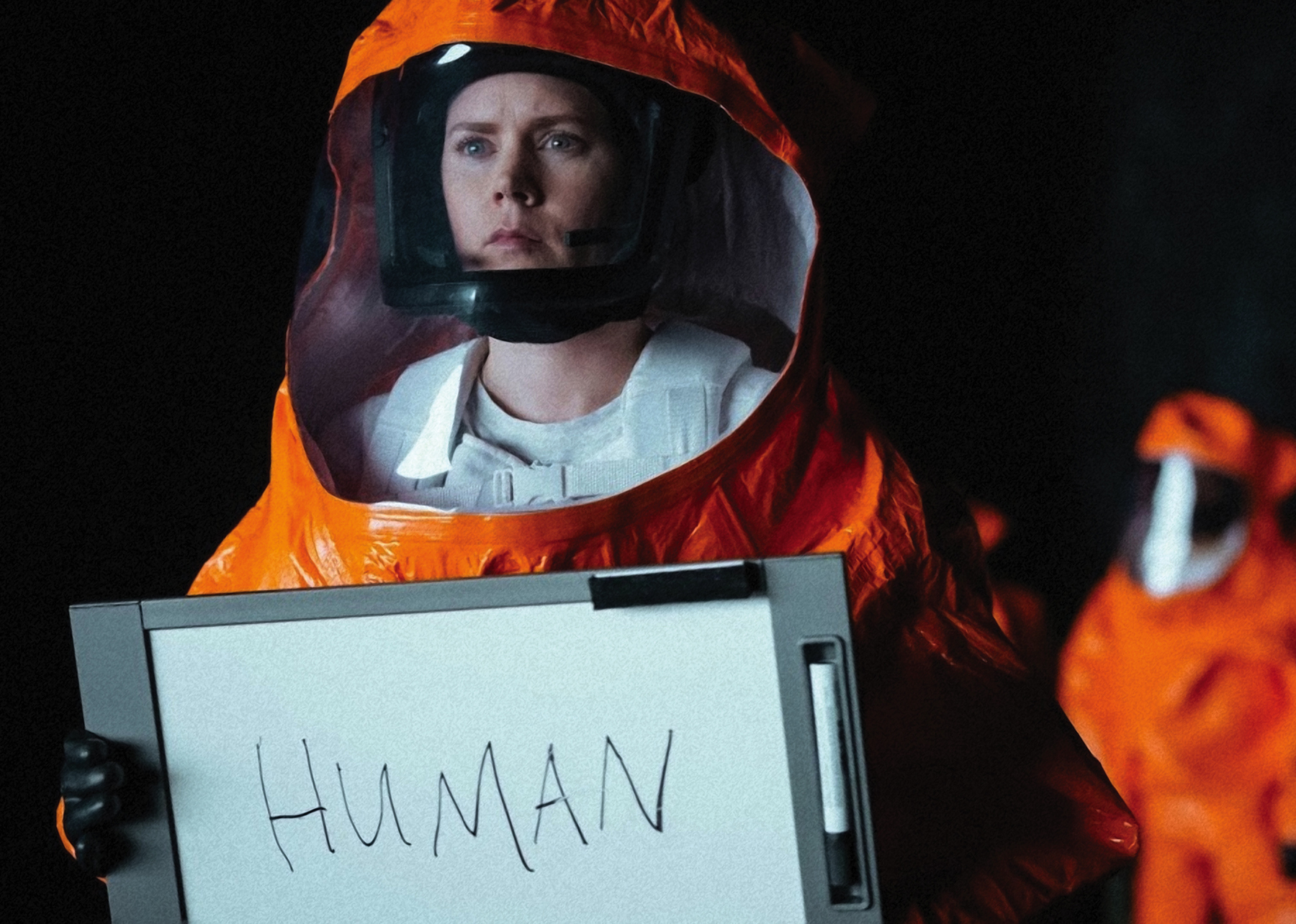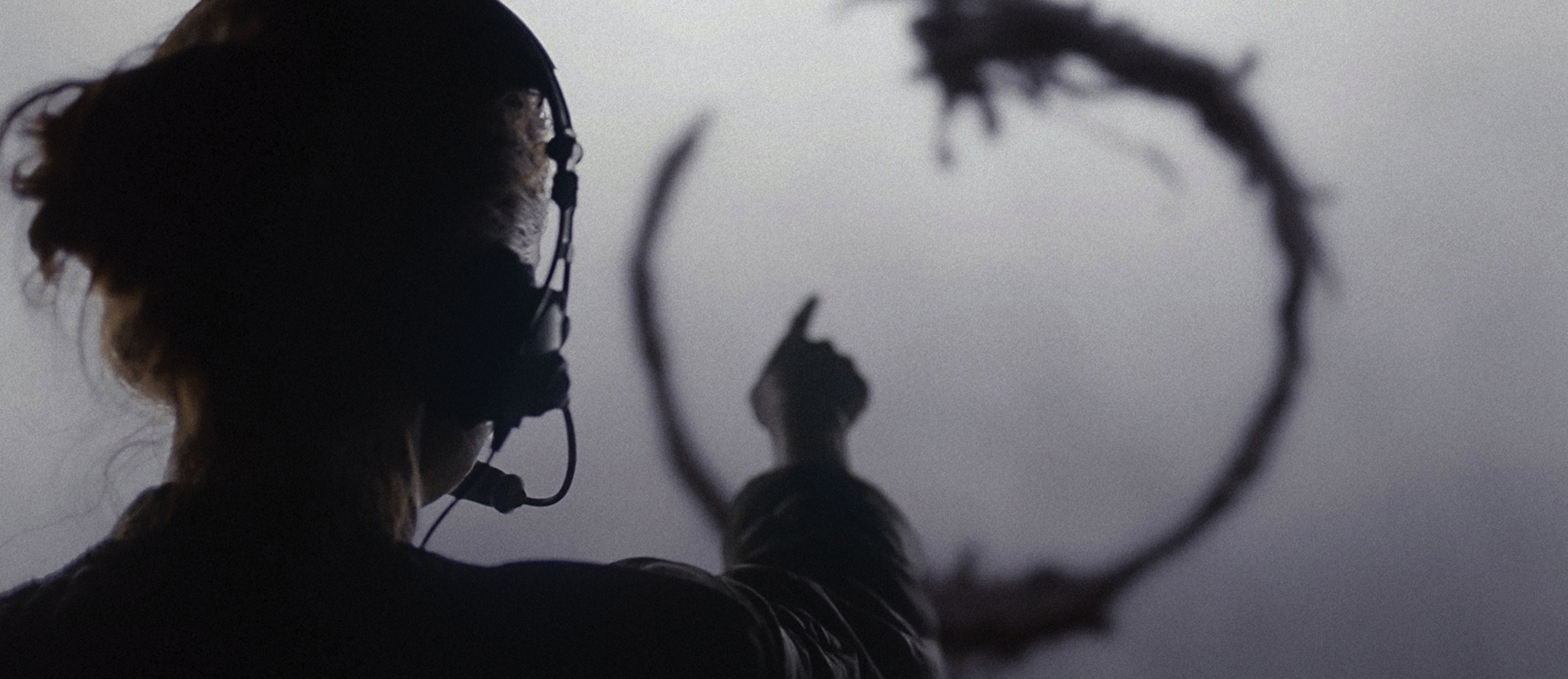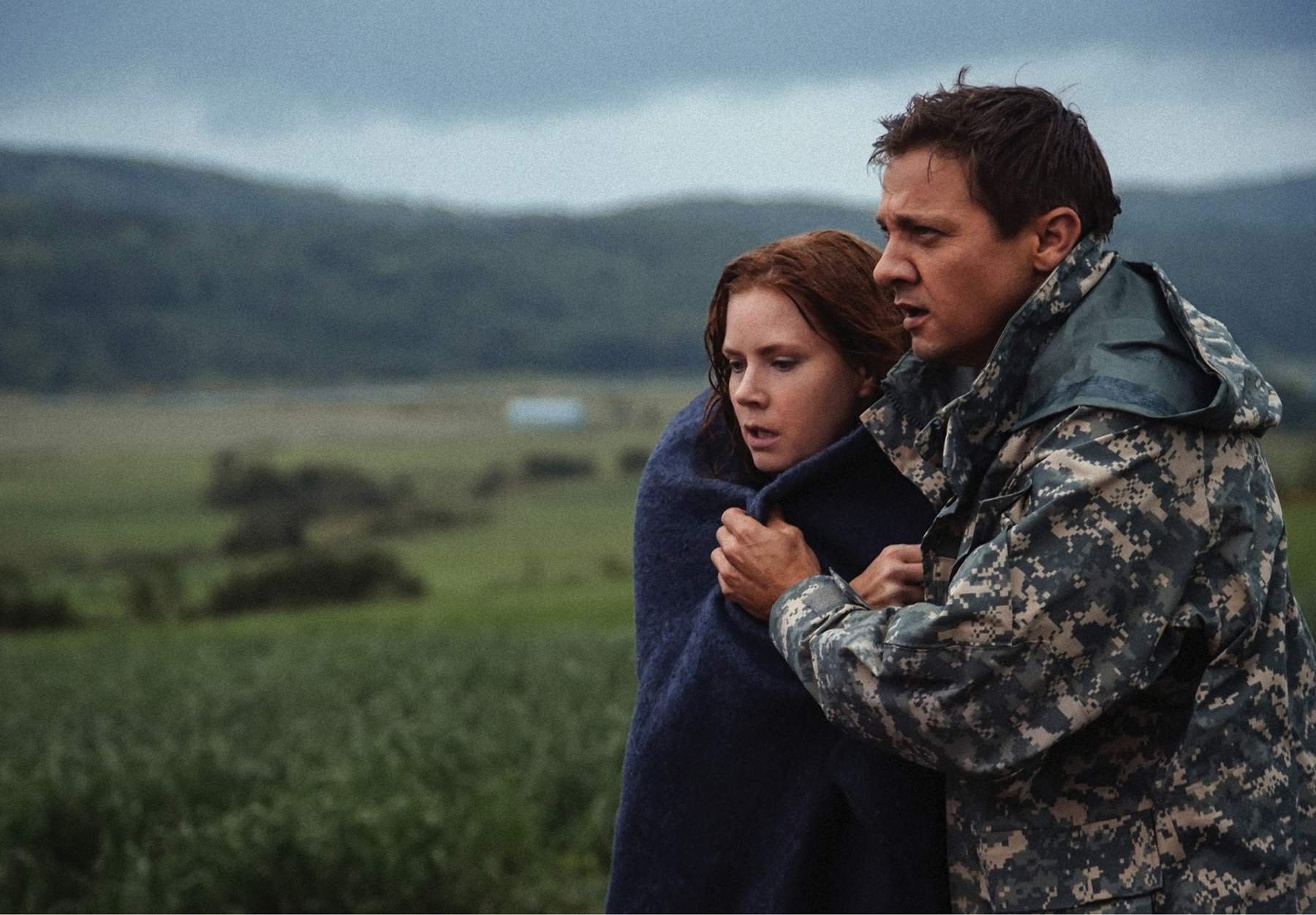2016
DIRECTOR: DENIS VILLENEUVE PRODUCERS: SHAWN LEVY, DAN LEVINE, AARON RYDER, DAVID LINDE SCREENPLAY: ERIC HEISSERER, BASED ON A STORY BY TED CHIANG STARRING: AMY ADAMS (LOUISE BANKS), JEREMY RENNER (IAN DONNELLY), FOREST WHITAKER (COLONEL WEBER), MICHAEL STUHLBARG (AGENT HALPERN), MARK O’BRIEN (CAPTAIN MARKS), TZI MA (GENERAL SHANG)
Arrival
PARAMOUNT • COLOR, 116 MINUTES
Following a mass arrival of alien ships, an expert linguist is hired by the military to communicate with the extraterrestrials and discover their intentions.

“If you could see your whole life from the start to finish, would you change things?” asks Amy Adams as linguist Dr. Louise Banks in Arrival. Offered flashes of the future by extraterrestrial visitors with a nonlinear view of time (and a circle-based written language that reflects this view), Louise courageously decides to embrace life in all its shades of darkness and light. With patience and subtlety, director Denis Villeneuve begins Arrival with the well-worn scenario of the world panicking as aliens land, only to take a detour down a less-traveled side road, transitioning into a story about a woman who has a transcendent life experience, thanks to a close encounter with an advanced species.
Québécois filmmaker Villeneuve had long searched for a science-fiction script that didn’t follow the expected conventions. “I was dreaming to do sci-fi, I’m not joking, since I was twelve years old,” Villeneuve told a reporter in 2016. “I was raised with it, but I was hoping to find the right story to tell, because it’s a difficult genre and there’s a lot of clichés, a lot of tropes.”
Eric Heisserer’s screenplay (based on the 1998 short story “Story of Your Life” by Ted Chiang) challenges sci-fi audiences to think a bit, to follow a linguist’s learning curve as she deciphers a complicated alien tongue. Working closely with Villeneuve, Heisserer shaped the literary source material in a more cinematic direction, adding a backdrop of geopolitical tension but keeping the core ideas intact. Initially, the project was rejected by several studio executives who feared the story was too cerebral for the mainstream crowd. As Heisserer recalled in 2016, “Some of the notes we got way early were, ‘We’re not going to buy the film unless you change the lead to a man,’ or ‘You need to get rid of all the flashbacks’ or ‘You need to have someone punch an alien at the end of it.’”
Heisserer and Villeneuve stuck to their guns, resulting in a very internal type of science-fiction film, rife with “silent moments full of breath and full of awe and full of wonder,” as Amy Adams has said. Like its soft-spoken heroine, Arrival functions on a quiet, thoughtful plane as it slowly collects shards of information and pulls them together into a complete picture. Each piece of the film’s puzzle was conceived to be unique. The two visitors—called heptapods because of their seven legs (and nicknamed Abbott and Costello)—don’t closely resemble any previous movie aliens, nor do the mysterious vessels that transport them recall typical Hollywood spaceships. Instead, the stone “shells” look like almonds sliced in half. Even the technology Louise and her partner, Ian (played by Jeremy Renner), use to communicate with the aliens is streamlined and powerful in its simplicity: They write on whiteboards with markers. The shot of Adams in an orange hazmat suit holding a board that reads HUMAN is an arresting image that implies some of the film’s unspoken questions: What does it mean to be human? How do we as a species define ourselves? How are we defined by nonhumans? Gradually, the tale reveals itself to be not a standard alien invasion, but a movie with a much broader scope encompassing timely messages about communication, understanding, and cooperation.

Amy Adams
The heptapods’ mystifying language does more than just express thoughts. “If you learn it, when you really learn it, you begin to perceive time the way that they do,” Louise says. “So you can see what’s to come.” Because of this gift, she foresees that her marriage will fracture over her decision to allow a painful experience to unfold before her instead of avoiding it. But, although Louise knows the outcome will be tragic, she affirms her life by proceeding as if she doesn’t know. Here, the film illustrates the paradox inherent in human existence: We are aware that life will someday end, yet we still try to experience it without thoughts of our impending death weighing us down. We know what the future holds, but we choose to focus on the present.

Director Denis Villeneuve

Amy Adams as Louise Banks
Arrival, along with movies such as Alfonso Cuarón’s Gravity (2013) and Christopher Nolan’s Interstellar (2014), fits into a trend the Washington Post referred to in 2016 as “a mini–golden age of sci-fi films,” a new wave of more mature, introspective blockbusters that use sci-fi to reflect on the human condition, rather than delivering the instant gratification of blowing aliens to smithereens with heavy artillery. Arrival provides nourishment for the brain and the heart, while also branching out into notions about destiny, personal choice, and free will.
The film received eight Academy Award nominations, including Best Picture (though it only took home one statue, for Best Sound Editing) and won the Ray Bradbury Award for Outstanding Dramatic Presentation in 2017. Named “science fiction’s brave new hope” by Wired magazine in 2017, Villeneuve followed Arrival with Blade Runner 2049 (2017) and plans for a reboot of Frank Herbert’s sci-fi saga Dune.
KEEP WATCHING
GRAVITY (2013)
INTERSTELLAR (2014)


